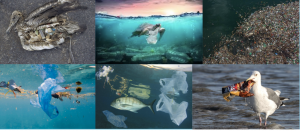8 million tons. You read that right. 8 MILLION TONS of plastic enter our oceans every single year. They’re welcomed by the already existing 150 million tons already there. If it’s easier for you to see it this way, that’s more than the weight of 1 BILLION adult elephants combined.
Plastic pollution is a problem that is growing rapidly all across the world. No matter where you go and where you look, the abundance of plastic will always be easily identifiable. Whether it’s the single-use packaging that many of us use daily, goods in stores that are made of plastic, or microplastic fibers from our clothing, we are surrounded by plastic. And there’s no slowing down in site. The fossil fuel industry has spent more than $180 billion since 2010 on facilities that will be used to make plastic, resulting in an estimated 40% rise in plastic production over the next decade.
There are two main types of marine plastic pollution. The first is land-based and the second is ocean-based. Land-based includes litter and debris that ends up in the ocean. Ocean-based includes fishing debris. According to a report at the United Nations Marine Conference there are approximately 51 trillion particles of plastic in our oceans. This same study reports that at least 40% of marine mammals and seabird species are affected by plastic ingestion each year. Plastic waste kills up to 1 million seabirds and over 100,000 marine mammals per year.
Plastics are photodegradable, which means when they are exposed to sunlight they break up into smaller pieces. This process takes much longer in the marine environment, which leaves large pieces of plastic floating around in our waters. And when it starts breaking down, it is very easily mistaken by marine animals as food.
At our current pace it is predicted that by 2050 plastic will outweigh all fish in our oceans. While this is killing our marine animals as stated above, it’s also affecting humans. The average person is intaking approximately 5 grams of plastic per week (about the size of a credit card). As plastic pollution rises, this number will too.


